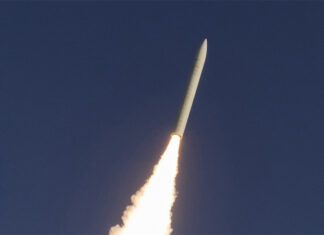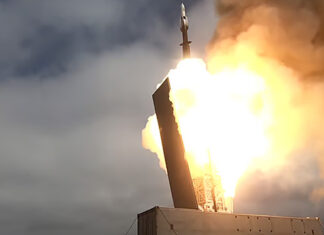Lockheed Martin (NYSE:LMT) has successfully completed at-sea demonstration operational testing of a new Fast Inshore Attack Craft (FIAC) Defense System, which provides an innovative and cost-effective way to quickly extend the defensive perimeter of most naval vessels out to five miles.
To counter the globally emerging threat of small attack boat swarms – referred to as FIAC by the U.S. Navy – a Lockheed Martin-led industry team, with the support of the Navy, developed the FIAC Defense System. The system integrates existing sensors, weapons and decision support systems with innovative command and control (C2) elements to allow host ships to detect, identify, verify hostility and target small boat threats beyond visual range, and then to engage hostile craft with Hellfire missiles as they penetrate the system’s five-mile defensive perimeter.
The FIAC Defense System derives its capabilities from the fusion of onboard radar and optical sensors, as well as potentially off-board sensors aboard Unmanned Aerial Systems (UASs), to provide both persistent and predictive situational awareness. The system uses the host ship’s radar for initial detection and the UAS’s advanced optical sensors to confirm target identification, capability and intent. Once a potential threat is identified as hostile, the target is then laser-illuminated and engaged with Hellfire missiles from either a deck-mounted launcher, the UAS or from a Hellfire- capable helicopter. The UAS’s optical sensors can then be used to confirm the successful engagement and provide a visual battle damage assessment.
During the recent Spiral 3 at-sea testing conducted in the Pacific Ocean, the FIAC Defense System was installed in standard U.S. Navy mission modules and loaded aboard Lockheed Martin’s Sea SLICE research vessel. With the exception of live lasing and live missile firing, the fully functional system successfully demonstrated its ability to detect and identify multiple potential threats at greater distances than what can be currently done using existing systems.
During the next phase of testing – Spirals 4 and 5 – the FIAC Defense System will include at-sea operations on a U.S. Navy test range with live lasing and surface-to-surface firings of Hellfire missiles against multiple FIAC threat scenarios.
“The FIAC Defense System provides the ability to protect ships from one of their most serious littoral threats,” said Dave Broadbent, vice president and general manager of Lockheed Martin’s Littoral Ships & Systems line of business in Baltimore, which is leading the industry team. “By investing our own research and development funds and relying primarily on existing, off-the-shelf software and hardware, Lockheed Martin and its partners are providing an affordable solution that can now be brought to market much faster than a custom-designed system.”
Other Lockheed Martin businesses partnered on the FIAC Defense System include Integrated Systems & Solutions in Valley Forge, PA; Missiles and Fire Control in Orlando, FL; and Simulation, Training and Support in Orlando. U.S. Navy partners include the Program Executive Office for Integrated Warfare Systems, Helo Strike Maritime Weapons School Pacific and the Surface Warfare Development Group. Other industry partners include Terma, of Denmark; FLIR Systems Inc. based in Oregon; and Cisco Systems, headquartered in California.



















